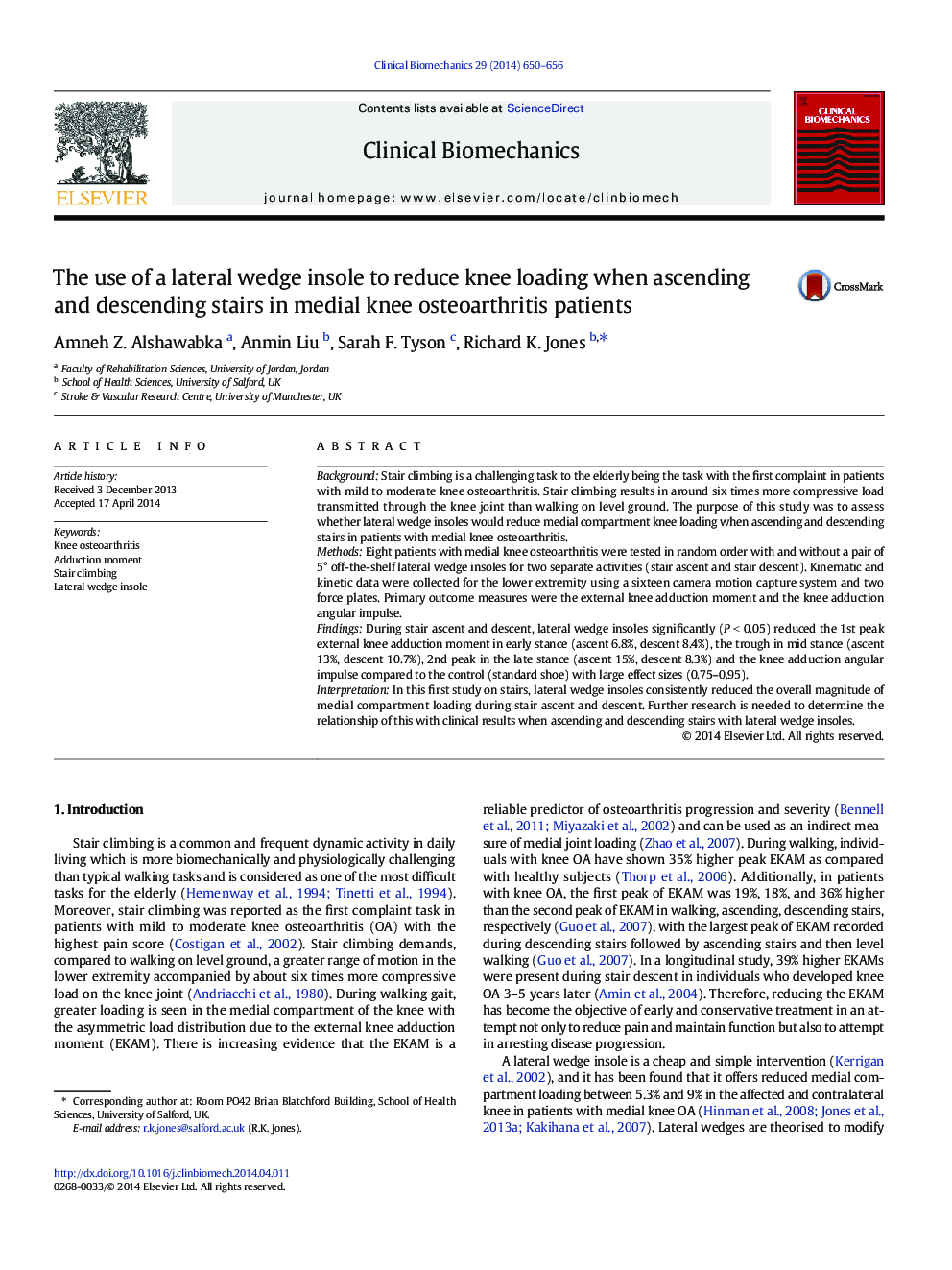| Article ID | Journal | Published Year | Pages | File Type |
|---|---|---|---|---|
| 4050434 | Clinical Biomechanics | 2014 | 7 Pages |
BackgroundStair climbing is a challenging task to the elderly being the task with the first complaint in patients with mild to moderate knee osteoarthritis. Stair climbing results in around six times more compressive load transmitted through the knee joint than walking on level ground. The purpose of this study was to assess whether lateral wedge insoles would reduce medial compartment knee loading when ascending and descending stairs in patients with medial knee osteoarthritis.MethodsEight patients with medial knee osteoarthritis were tested in random order with and without a pair of 5° off-the-shelf lateral wedge insoles for two separate activities (stair ascent and stair descent). Kinematic and kinetic data were collected for the lower extremity using a sixteen camera motion capture system and two force plates. Primary outcome measures were the external knee adduction moment and the knee adduction angular impulse.FindingsDuring stair ascent and descent, lateral wedge insoles significantly (P < 0.05) reduced the 1st peak external knee adduction moment in early stance (ascent 6.8%, descent 8.4%), the trough in mid stance (ascent 13%, descent 10.7%), 2nd peak in the late stance (ascent 15%, descent 8.3%) and the knee adduction angular impulse compared to the control (standard shoe) with large effect sizes (0.75–0.95).InterpretationIn this first study on stairs, lateral wedge insoles consistently reduced the overall magnitude of medial compartment loading during stair ascent and descent. Further research is needed to determine the relationship of this with clinical results when ascending and descending stairs with lateral wedge insoles.
